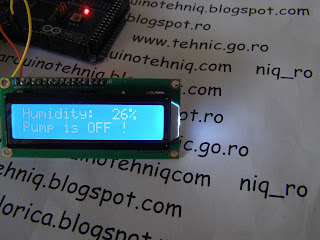or Nokia 5110 display (see article Radio FM cu TEA5767 si... Arduino (II)
Now, I use a 1602 alphanumerical display with i2c interface and Arduino Leonardo board:
Schematic is very simple:
Using TEA5767_eeprom_i2c_lcd1602_1m1a.ino sketch I can search forward or backward and after I decided what radiostation I listen, frequency value is sotred in internal EEPROM memory of microcontroller from Arduino board.
In TEA5767 FM radio and Arduino movie you cand see all feature of this radio with Arduino...












































